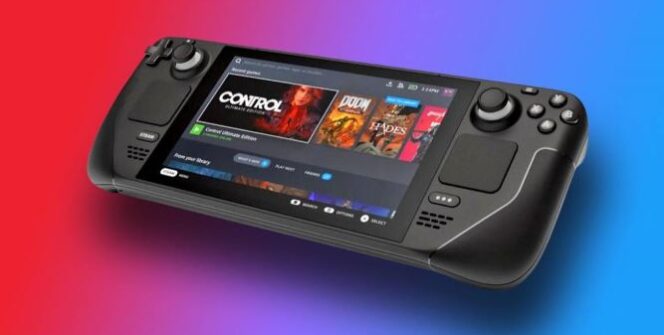STEAM DECK NEWS – Valve’s handheld PC is powerful enough for emulation, but how do you get it to work?
First you’ll need a high-speed A2 miniSD card (e.g. SanDisk Extreme Pro) to run your games from (unless you’re content to just load them onto the SSD), legally owned BIOSes and ROM files, a USB-C capable device to move them around, and of course a keyboard and mouse, as you’ll need to enable Steam Deck’s developer mode to make the process run smoothly.
Press the Steam button, then select System, then set the System Update Channel to Stable. In System Settings, enable Developer Mode, then under Wi-Fi, turn Wi-Fi Power Management off so that Steam Deck uses 5 GHz networks. In Miscellaneous, make sure CEF Remote Debugging is enabled. Steam Deck should be set to stable mode so that there are no more issues with emulators when using Beta or Beta Candidate mode.
Ready to install EmuDeck. Press the Steam button under the left touchpad, switch to Desktop mode, then go to the EmuDeck website in a browser to download the installer. The SteamOS version is required, place the installer on the desktop, then select: no emulator choice to install in Easy mode, or pick which emulators to install in Custom. For the ROMs folder, specify the SD card (or SSD if not in use) and select the Steam Deck icon as the device. You can use the USB Transfer Tool to add the ROMs right away, or skip it to load them later. It is better to add them manually. EmuDeck will then be installed and you can change several things. For example, how to make what you’re running look nicer…
For retro games, select Quick Settings, turn on Autosave and Bezels. Set the aspect ratio to 4:3 for SEGA Classic, Nintendo Classic and 16:9 for 3D Classics and GameCube. Turn on the LCD Handhelds option. Turning on CRT 2D/3D gives the effect of playing on an old CRT TV. After saving the settings, jump back and put the emulated games and BIOSes in the folders dedicated to them, then add them to the library so they are accessible from Steam Deck’s Gaming mode.
Set Steam Deck to Desktop mode, then click the folder icon at the bottom of the screen. Under Removable Devices, select Primary (only if you’re running games from an SD card, of course), then Emulation – ROMs. Put the ROMs in the relevant folders (e.g. PS2 games in PS2 folder). For BIOSes, select Dolphin file manager from desktop mode, then EmuDeck installation on SD card by selecting Primary option at the bottom of the screen under the left panel. Then go to the Emulation – BIOS folder and copy the files into it.
You can put the emulated games under the new Collections tab of the Steam Deck directory by opening EmuDeck, selecting Steam ROM Manager, tap Yes, closing the Steam app, launching the ROM Manager, and to select a separate emulator, turn off Toggle Parsers, select what you want, then Add Game, Refresh, add artwork images to the games, and Save to Steam. You can fix the broken images with the Fix icon, type in the title of the game, find what you like, then save. To upload the missing images, save the corresponding artwork to the Pictures folder using the image search in Desktop mode, and search for them from EmuDeck using the Steam ROM Manager. Under Collections, do not run games with Proton settings, as that may not always work.
If the games are not running properly (slow, distorted sound), press the QAS button under the right touchpad, select the Performance menu, turn on the per-game profile, then raise the frame rate limit to 60 FPS. There are plenty of emulators in the EmuDeck (RetroArch – all-in-one, Dolphin – GameCube and Wii, Primehack – Metroid Prime Trilogy on Wii, PPSSPP – PSP, DuckStation – PS1, melonDS – Nintendo DS, Citra – Nintendo 3DS, PCSX2QT – PS2, RPCS3 – PS3, Yuzu – Switch (old installers only), RyuJinx – Switch (old installers only), Xemu – Xbox, Cemu – Nintendo Wii U, Rosalie’s Mupen Gui – N64, MAME – arcade games, Vita3K – PS Vita, ScummVM – Scumm and MS-DOS, Xenia – Xbox 360 (beta), mGBA – Game Boy Advance.
So there’s plenty to play with…
Source: GameRant















Leave a Reply